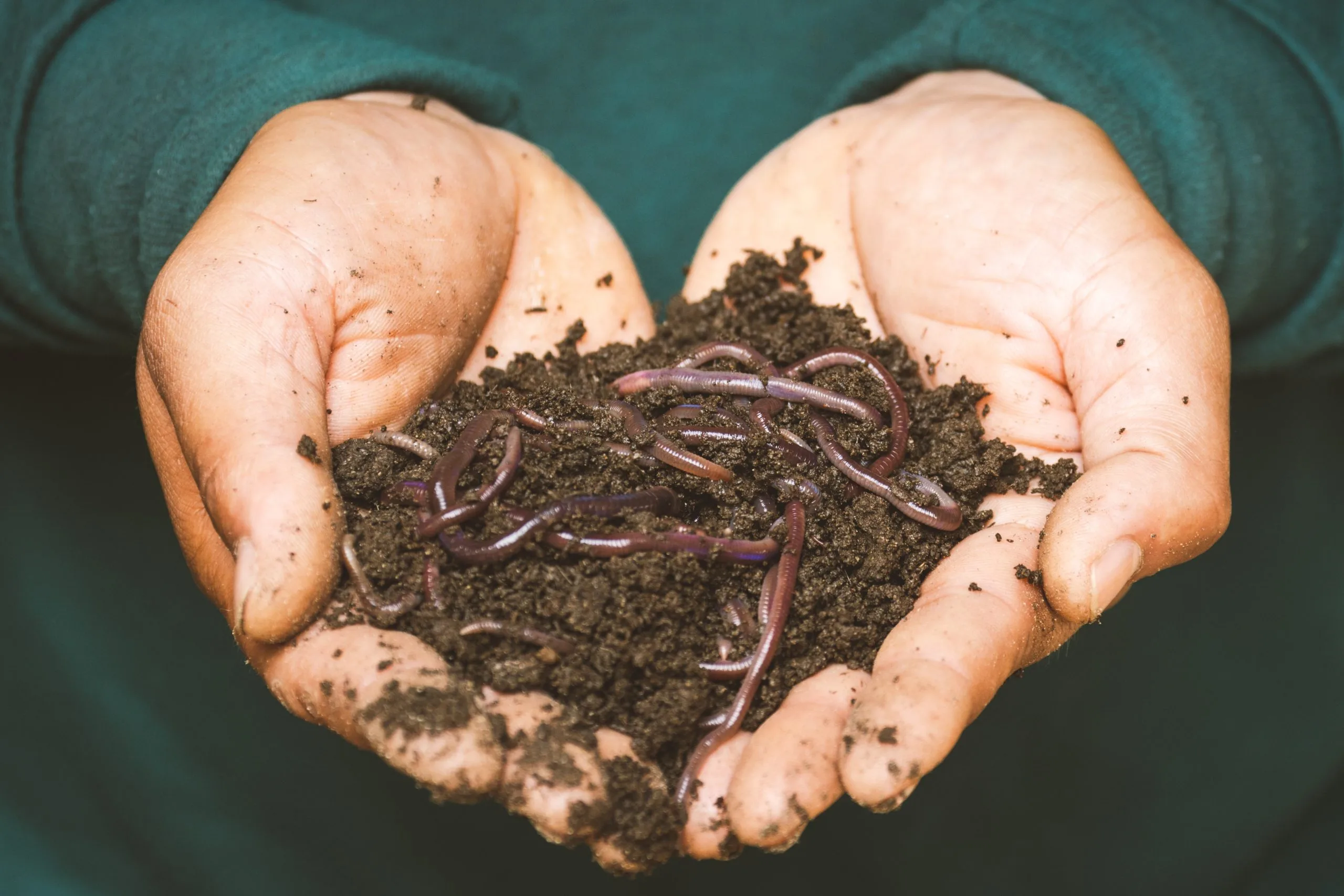Dead bodies can now be turned into fertile soil. This is a pretty wild thing to read, but on the search for greener, more environmentally conscious methods of burial, this has presented itself as a possible option. With options ranging from encasing your body into a pod that sprouts into a tree, to sealing your ashes in a concrete ball that will be plunged to the bottom of the sea to feed coral reefs, one of the latest options to gain widespread attention, and legalization in a few states, is human composting.
Before we delve into human composting, we need to look at composting, as this is a vital part of this process.
What is Composting?
Composting can be explained as a process whereby organic waste is recycled. It is a controlled, aerobic process that converts organic matter (e.g., banana peels, teabags, eggshells, leaves, etc.) into a valuable fertilizer. This fertilizer is then available to enrich plants and soil. Decomposing organisms, such as bacteria, and fungi, can thrive in this environment. This makes the final decomposed material resemble fertile garden soil, due to its nutrient-rich content.
What Is Human Composting?
Human composting, also known as natural organic reduction, is the practice of harnessing a dead body, and transforming it into a nutrient-rich soil/compost. It is based on the same premise as standard composting, providing an environmentally friendly alternative to traditional burial options. As part of the green burial movement, it aims to offer an eco-friendly way of disposing of a body after death.
How Does It Take Place?
The process places a corpse into an airtight vessel to be surrounded by a mixture of wood chips, straw, alfalfa plants, and sawdust. These organics quickly gather and retain heat naturally, avoiding the costly fossil fuel expenditure. This allows it to mimic the natural decomposition process, thereby turning the body into soil.
What Are The Steps?
The corpse and plant material remains in the vessel for five to seven weeks. The heat inside the vessel speeds up the microbial activity, and after about 30 – 50 days, the body becomes organic matter. Since teeth and bones cannot be broken down in this process, there is a separate process to ground them using specialized equipment, which later mixes them with the rest of the “soil”. Over the next 30 days, the soil gets time to stabilize and completely dry out. Finally, the family of the deceased person receives the remains of the body.
Why Is It A Preferred Option?
Some people believe that human composting “offer more eco-friendly options for the disposal of a body after death.” For the longest time, burial took place in caskets. However, according to the National Funeral Directors Association, the burial rate is sitting at 36.6%. What people may not realize, is that this form of burial may have negative impacts on the environment. This is due to a body requiring embalming before the actual burial.

Photo by Todd Thompson on Unsplash
What is Embalming?
Embalming is the process of delaying the natural effects of death. In this process, the body is cleaned and drained of any fluids. Embalming fluid is then injected into the arteries, which helps preserve the body’s tissues. This fluid consists of formaldehyde (a possible carcinogen), menthol, phenol, and glycerin. It is after this process that the body is dressed and prepared for viewing, and burial. While this may seem pretty normal, embalming fluid is believed to be a huge contributor to the damage to the environment.
While all adverse environmental effects of embalming fluids leaching into the ground following a body’s burial still require more research, there is no doubt that they are capable of causing some damage. As time goes on, because the burial process puts these chemicals deep in the ground, they can gradually work their way to the soil and underground waterways. To combat the environmental repercussions of embalming due to burials, many opt for cremation.
Cremation
This method has seen a massive rise over the past few years. In fact, the cremation rate is currently recorded as 57.5%, as per the National Funeral Directors Association. This is a figure that has doubled over the past 15 years. While cremation has established itself as a cheaper and less land-intensive option as opposed to burial, it is not without its own disadvantages.
The impact of cremations on the environment first made headlines in 2020 when Los Angeles faced a backlog of bodies from the Covid-19 pandemic. Estimations indicate that one cremation produces about 534.6 pounds of carbon dioxide, which is the equivalent of driving your car for 500 m. Along with carbon dioxide, cremation also releases fine soot, sulfur dioxide, heavy metals, and mercury emissions due to dental fillings. While it may be less harsh on the environment than burials, it’s not an option that doesn’t cause damage to the environment.
Not Everyone Agrees
Dennis Paust, executive director of the New York State Conference, said turning remains into organic material does not meet the standard of end-of-life treatment. He adds that “human bodies are not household waste, they are vessels of the soul”. Not only that, but “just as church teaching prohibits the scattering or dividing of cremated remains, it would not permit the spread of composted human remains.”
The New York State Catholic Conference wrote a letter to Gov. Kathy Hochul, who legalized human composting in the state. The letter stated that “it is inappropriate to suddenly introduce a completely different method, with no input from the public, religious communities, or anyone else outside the state Capitol”.
The New York State Funeral Directors Association, which represents over 950 funeral homes across the state, states that this legislation “… excludes funeral homes from having the option of owning (or) operating a facility necessary to provide this service to families.” Their opposition is based on the fact that they aren’t able to provide the service.
A New Meaning To Life After Death?
This method of green burial has created a whirlwind of varying opinions, from the public, and associations alike. It is now legalized in 6 states and counting, with the first state to legalize it being Washington D.C., in 2019. Colorado, Oregon, Vermont, California, and New York soon followed after. Chances are the list will continue to grow. There is no right or wrong way to bury your loved ones. What is important is respecting and honoring their final wishes.
Deciding whether you should opt for this form of burial is dependent on various factors, including your own cultural and religious beliefs. What is important is respecting each other’s individual views, and not enforcing ideals onto others, as this is merely another option for burials, it is not an enforced method. Just like everything, burial methods are not one-size-fits-all, but are personal. One person may wish to opt for cremation, while the next person may prefer traditional burials.



![women [longevity live]](https://longevitylive.com/wp-content/uploads/2020/01/photo-of-women-walking-down-the-street-1116984-100x100.jpg)










